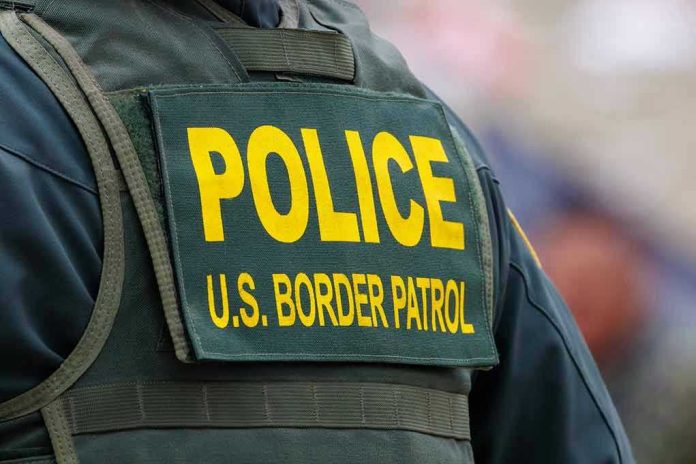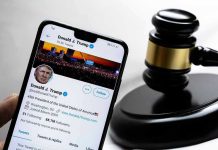
When 800 people are arrested in a single day, the streets do not simply whisper—they roar with the raw pulse of a nation grappling with the future of who belongs and who decides.
Story Snapshot
- Chicago ICE facility becomes the epicenter of protest as raids sweep up 800 individuals.
- Clashes erupt between police and demonstrators, amplifying the city’s political divisions.
- Questions mount about immigration policy, civil rights, and the limits of government authority.
- Community leaders and activists use the moment to galvanize broader action and debate.
Chicago’s Tipping Point: Raids Ignite a City’s Nerves
Chicago’s south side, already simmering from a summer of political tension, jolted awake as federal immigration agents executed a series of coordinated raids that resulted in the arrest of 800 people. The scale of the operation dwarfed previous efforts and sent shockwaves through immigrant communities, sparking panic, confusion, and a rapid mobilization of local activists. Families scrambled to locate loved ones, while social media channels buzzed with real-time updates and calls for emergency legal aid. The city, known for its resilience and activism, suddenly found itself at the center of a national debate over how far enforcement should go and who gets caught in the crossfire.
Protesters converged outside a Chicago-area ICE facility within hours, their chants echoing down the block as police formed tight lines to keep crowds at bay. Tensions escalated when officers attempted to disperse demonstrators, resulting in brief but intense clashes. Organizers insisted on nonviolent resistance, but frustration boiled over among those who claimed both the raids and the police response were excessive and unjust. The spectacle drew mainstream media attention, but it was the viral images and firsthand accounts on social media that fueled a sense of urgency across the city’s neighborhoods. The number of arrests, unprecedented for Chicago, stoked fears that similar sweeps could soon hit other urban centers.
Political Fallout: Leaders, Law, and the Limits of Power
Local politicians scrambled to respond, with city council members and congressional representatives issuing statements condemning the raids. Some called for investigations into federal tactics, while others urged calm and respect for law enforcement. The mayor’s office faced pressure to outline a clear stance, balancing federal cooperation with Chicago’s reputation as a sanctuary city. Legal experts weighed in, dissecting the constitutional boundaries of such raids and warning of long-term consequences for civil liberties. Activists seized the moment to push for policy changes, organizing town halls and press conferences to demand greater oversight. The public conversation shifted from simple outrage to a broader examination of the machinery behind immigration enforcement and its ripple effects on American society.
Feds arrest more than 800 illegal immigrants across Chicago, Illinois https://t.co/kdbrVeNyjs pic.twitter.com/PgXyswkDyC
— Anna Giaritelli (@Anna_Giaritelli) October 1, 2025
Chicago’s immigrant communities, many with deep roots in the city, expressed a mix of fear and defiance. Churches and community centers opened their doors for emergency meetings, while legal aid groups worked overtime to track detainees and provide counsel. The city’s long history of welcoming newcomers clashed dramatically with the reality of mass arrests, raising questions about the preservation of local values versus the enforcement of federal law. Families recounted stories of relatives taken without warning, fueling a narrative of vulnerability and resilience. The debate over immigration, always contentious, now unfolded in the streets rather than behind closed doors.
The National Lens: Chicago as a Microcosm of America’s Divide
National media outlets quickly latched onto the story, framing Chicago as a battleground for the future of American immigration policy. Commentators on both sides of the political spectrum used the events to reinforce their arguments, with some citing the need for strict border enforcement and others warning of government overreach. The arrests became a symbol—either of necessary law and order or of a society losing sight of compassion and due process. Social media amplified voices that might otherwise be ignored, turning local grievances into national talking points. The city’s response, both official and grassroots, was scrutinized for lessons that could apply elsewhere.
As the dust settled, Chicago’s political and cultural fault lines were more exposed than ever. The raids and resulting protests forced residents to confront uncomfortable truths about identity, belonging, and the role of government. The legacy of the event remains unsettled, with ongoing efforts to support affected families and advocate for policy reform. For many, the question endures: How far will America go to define—and defend—its borders, and at what cost to its own ideals?









